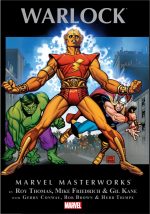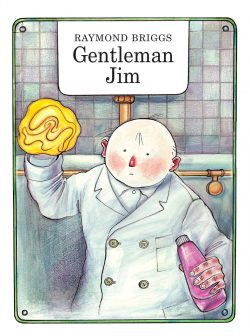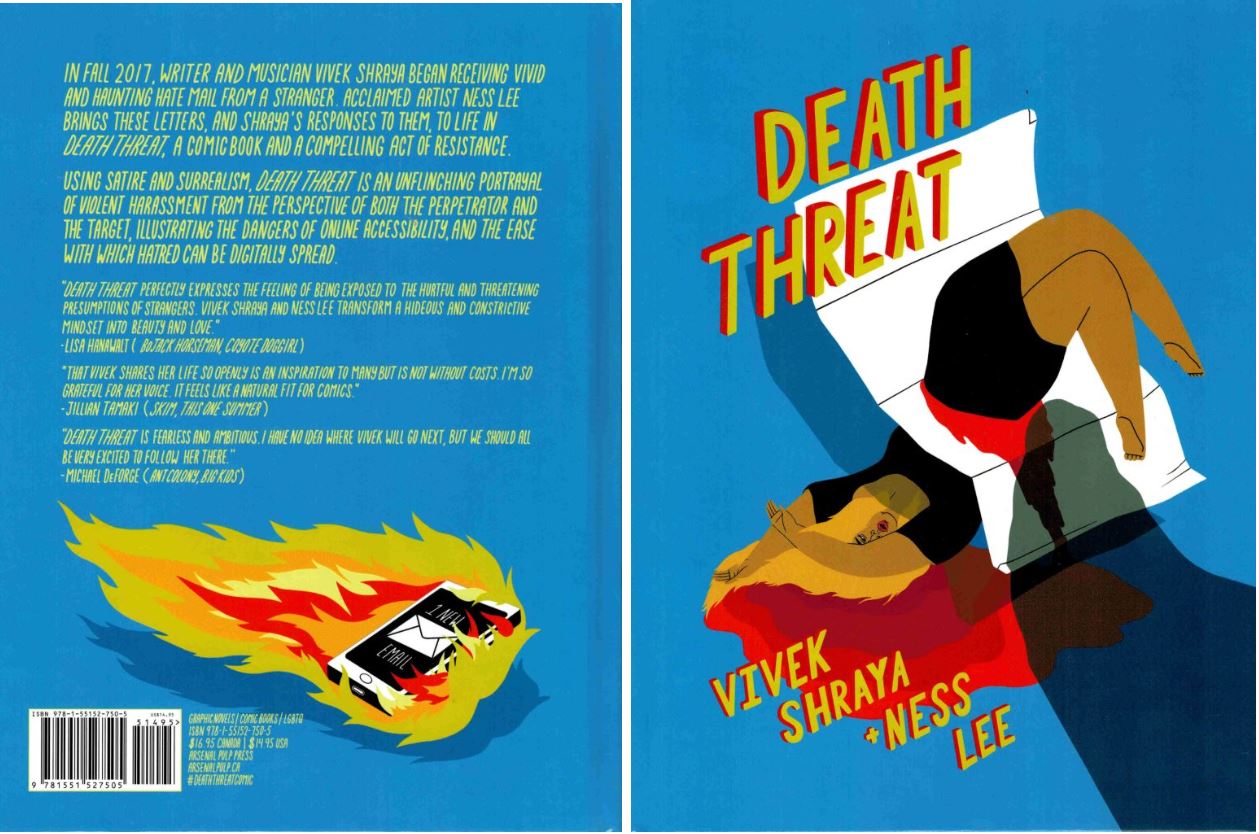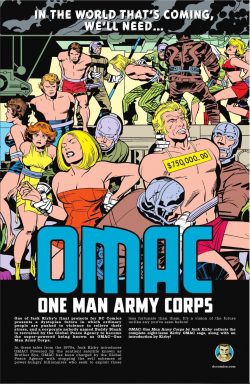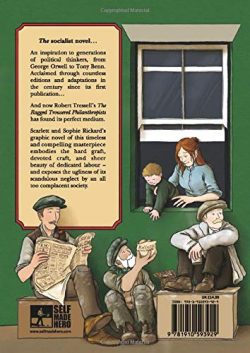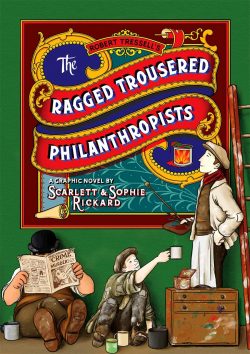
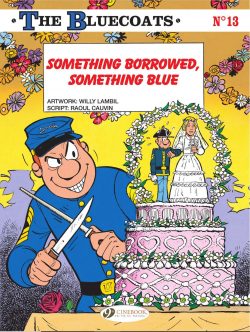
By Willy Lambil & Raoul Cauvin, translated by Jerome Saincantin (Cinebook)
ISBN: 978-1-84918-531-8 (Album PB/Digital edition)
Devised by Louis “Salvé” Salvérius & Raoul Cauvin – who scripted the first 64 volumes until retirement in 2020 – Les Tuniques Bleues (or Dutch co-incarnation De Blauwbloezen) debuted at the end of the 1960s: created to replace Lucky Luke when that laconic maverick defected from weekly anthology Le Journal de Spirou to rival publication Pilote.
From its first sallies, the substitute strip swiftly became hugely popular: one of the most popular bande dessinée series in Europe. In case you were wondering, it is now scribed by Jose-Luis Munuera and the BeKa writing partnership…
Salvé was a cartoonist of the Gallic big-foot/big-nose humour school, and after his sudden death in 1972, successor Willy “Lambil” Lambillotte gradually adopted a more realistic – but still overtly comedic – tone and manner. Lambil is Belgian, born in 1936 and, after studying Fine Art in college, joined publishing giant Dupuis in 1952 as a letterer.
Born in 1938, scripter Cauvin was also Belgian and – before entering Dupuis’ animation department in 1960 – studied Lithography. He soon discovered his true calling – comedy – and began a glittering, prolific writing career at Le Journal de Spirou. In addition, he scripted dozens of long-running, award winning series including Cédric, Les Femmes en Blanc and Agent 212: more than 240 separate albums. Les Tuniques Bleues alone has sold more than 15 million copies of its 66 (and counting) album sequence. Cauvin died on August 19th 2021, but his vast legacy of laughter remains.
Here, as The Bluecoats, our long-suffering protagonists are Sergeant Cornelius Chesterfield and Corporal Blutch; worthy fools in the manner of Laurel & Hardy: hapless, ill-starred US cavalrymen defending America during the War Between the States.
The original format offered single-page gags set around an Indian-plagued Wild West fort, but from the second volume – Du Nord au Sud – the sad-sack soldiers were situated back East, fighting in the American Civil War. All subsequent adventures – despite ranging far beyond the traditional environs of America and taking in a lot of genuine and thoroughly researched history – are set within the timeframe of the Secession conflict.
Blutch is your run-of-the-mill, whinging little-man-in-the street: work-shy, mouthy, devious and ferociously critical of the army and its inept commanders. Ducking, diving, or deserting whenever he can, he’s you or me – except at his core he’s smart, principled and even heroic …if no easier option is available.
Chesterfield is a big, burly professional fighting man; a proud career soldier of the 22nd Cavalry who passionately believes in the patriotism and esprit-de-corps of the Military. He is brave, never shirks his duty and hungers to be a medal-wearing hero. He also loves his cynical little troll of a pal. They quarrel like a married couple, fight like brothers and simply cannot agree on the point and purpose of the horrendous war they are trapped in: a situation that once more stretches their friendship to breaking point in this cunningly conceived instalment.
Des bleus et des dentelles was originally serialised in 1983 in Le Journal de Spirou (#2384-2387) before collection into another mega-selling album in 1985. It was the 22nd European release and in 2020 became Cinebook’s 13th translated volume. As Something Borrowed, Something Blue it offers a lighter touch and tone than many, with the underlying horror salved by a kind-of romance and ridiculously surreal black comedy.
Once again Union forces are stalemated with no advance possible. Even the cavalry – under the leadership of utterly deranged, apparently invulnerable maniac Captain Stark – are stuck in dugouts, dodging enemy artillery fire beside ordinary foot soldiers. The zealot’s constant, costly, pointless charges at Confederate gun emplacements have left them short of riders and out of horses…
Sergeant Chesterfield is furious, but Blutch is perfectly happy keeping his head down and playing cards… until a shell lands on his position. By some miracle, he survives, but as Chesterfield brings him to the casualty-packed field hospital, it becomes clear that the odds of remaining so are against him.
Only the sarge’s armed intimidation can get a doctor to even look at his pal, and when they try to hack off Blutch’s leg, only the little man’s hidden gun stops them from completing the unnecessary surgery…
Suddenly, the entire camp’s attention is switched to the hospital, as the General’s latest morale-boosting scheme arrives: volunteer medical assistants – all women…
Suddenly, the entire army is stricken with some malady or other. Even Stark abandons the joy of slaughter to secure some female attention, and a top level secret plan is enacted to retore order. It involves scrupulous triage before any soldier can be admitted for treatment and to make doubly sure of weeding out malingerers, the formidable Miss Bertha will examine every man claiming injury.
The most secret part is that she is actually the hugely unhappy Private Burke in drag. His greatest fear is dying in a dress, but at least he won’t have to explain his new “uniform” to the wife and kids…
Meanwhile, actually injured Blutch is slowly recovering, thanks in great part to the diligent ministrations of nurse Jenny. Angel and patient are always together now, and Chesterfield finds himself increasingly lonely and jealous …but not as much as Blutch’s incredibly smart horse Polka…
As the shirker heals, the military situation is worsening. The unassailable artillery is grinding the Union stronghold to rubble and ruin, but things start changing after another futile Stark sortie leads to the enemy troops learning there are women in their enemies’ camp. Soon, Rebel wounded are demanding that they be treated in the Union hospital too…
The situation is untenable and Chesterfield is going crazy, but the biggest bombshell comes not from enemy guns but little Blutch, as he hobbles around on crutches. The little guy is going to marry Jenny…
Initially horrified, the General unexpectedly agrees to the match, but as preparations take the men’s minds off the perpetual bombardment another shock lands after Stark requests he be allowed to wed “Bertha”…
Moreover, as Mr and Mrs Blutch ride a buggy back to safety and civilisation, Chesterfield discovers the truth about Bertha and is ordered to take his place as a female-presenting triage nurse. When “Miss Cornelia” then discovers how Blutch and Jenny have fooled everybody and escaped the war, he goes ballistic and sets off after the delinquents. He finds them frantically coming towards him scant yards ahead of a Confederate sneak attack approaching the Union camp from the rear.
Suddenly, it’s time for everyone to get back to the real business of war, with the Bluecoats survival dependant on Stark’s insane tactics…
Combining searing satire with stunning slapstick, Something Borrowed, Something Blue deftly delivers a beguiling message about the sheer stupidity of war equally clear to younger, less world-weary audiences and old lags who have seen it all.
These stories weaponise humour, making occasional moments of shocking verity doubly powerful and hard-hitting. Funny, thrilling, beautifully realised and eminently readable, Bluecoats is the kind of war-story and Western, appealing to the best, not worst, of the human spirit.
© Dupuis 1985 by Lambil & Cauvin. All rights reserved. English translation © 2020 Cinebook Ltd.



